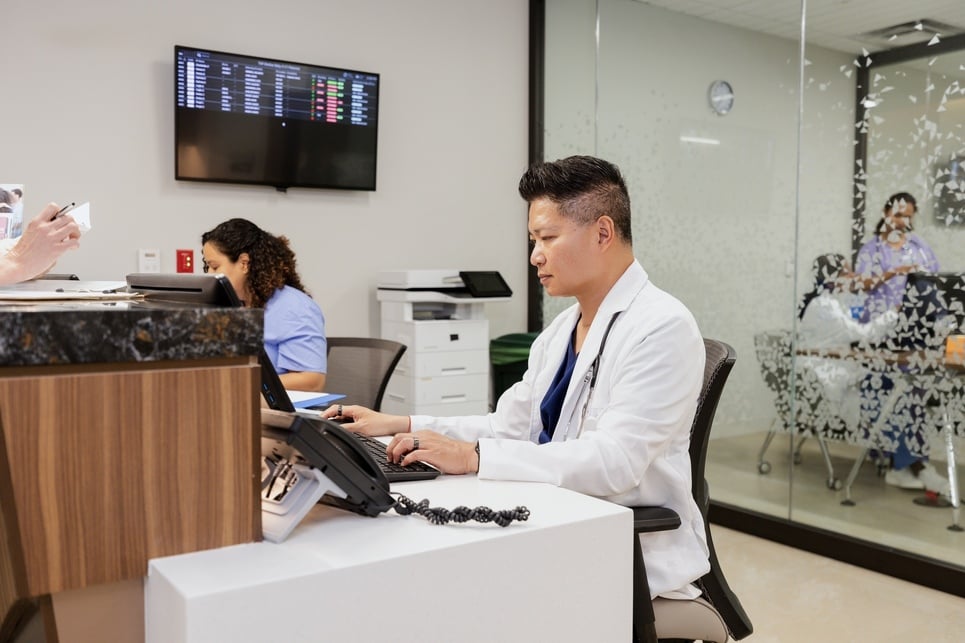

By Jennifer O'Rourke | Jun 27, 2025
3 minute read MEDITECH| EHR/EMR| Hospital Revenue Cycle| Blog
Every missed charge is a missed opportunity, and hospital sustainability depends on operational efficiency and revenue integrity. One acute care hospital recently partnered with CereCore because they suspected revenue leaks stemming from their EHR, MEDITECH Expanse. Our team assessed the hospital’s revenue cycle and end-to-end financial impacts within the EHR. The solution? Automating nursing charges to post directly from clinical documentation within their MEDITECH EHR. The innovative, streamlined workflow resulted in $45,630.75 in additional revenue in just one week without adding work for staff.
Historically, nursing-related procedures were inconsistently captured for billing purposes. This was due to a reliance on manual charge entry processes and a disconnect between clinical documentation and financial systems. As a result, many high-value services went unbilled, leading to significant revenue leakage.
CereCore implemented a targeted strategy to automatically generate nursing charges based on clinical documentation triggers within the MEDITECH EHR. By mapping specific procedures and interventions directly to nursing documentation entries, system configurations ensure applicable charges generate in real time—eliminating the need for manual entry from nursing staff or coders.
Example Charges Captured Automatically
Procedure |
Volume |
Unit Price |
Total Revenue |
|
Nursing Procedure Charges |
21 |
$2,593.50 |
$27,715.00 |
|
OB Procedure Charges |
17 |
$754.75 |
$12,830.75 |
|
OB Hydration Charges |
6 |
$847.50 |
$5,085.00 |
|
Weekly Total Revenue |
$45,630.75 |
||
Revenue Cycle Automation Adds Up
Let’s consider the average patient volume of this 61-bed facility and assume automated nursing charge capture totals remain consistent.
$45,000 x 4 weeks/month = $180,000 estimated monthly revenue recovery
$180,000 x 12 months/year = $2.1M in estimated total annual revenue recovery
This is just one example of charge capture automation. Imagine this result in a different size facility, and you can see how this strategy adds hidden revenue streams.
Consider the opportunities:
This implementation is a clear demonstration of how thoughtful alignment between clinical workflows and financial systems can yield immediate results. By leveraging the flexibility of MEDITECH and the expertise of CereCore’s consultants, hospitals can recover lost revenue, reduce administrative overhead, and ensure the full scope of care is captured for reimbursement.
How long did the implementation take to complete?
From beginning to end, the assessment and solution implementation took three months, working closely with revenue cycle and clinical leaders.
Was this a quick win or a multi-month project?
This was one of several quick wins identified during the MEDITECH assessment and optimization project.
Additional focus areas included:
Can automated billing be configured for other departments?
We are actively enhancing revenue generation by automating charge documentation across multiple departments, including dietary, physical therapy, surgery, and DEM/orthotic devices.
We have previously collaborated with other healthcare organizations to automate ED care level acuity billing, and we're currently implementing automated ED billing at this hospital. Read how automated ED billing works.
This automation can be integrated during a new MEDITECH Expanse implementation or as an optimization project within an existing system.
Is there a roadmap for expanding this automation?
Yes, here’s a process you can use in your organization to get started:
How were staff trained or onboarded?
The automated charge documentation system is designed to integrate seamlessly into nursing workflows, requiring minimal training as it aligns with existing documentation practices. Within best practice guidelines, department leadership should be trained on billing reports to ensure accurate charge capture, especially if they haven’t already adopted this standard practice. This approach enhances efficiency while maintaining compliance and operational consistency.
EHR optimization, like automated charge capture, yields high returns. As this acute care hospital discovered, integrating technology with workflow optimization isn't just a technical upgrade—it's a revenue strategy.
Interested in learning how CereCore can optimize your hospital’s EHR performance and financial outcomes? Let’s talk.
Explore more resources:
Consultant, MEDITECH Services, CereCore
Consultant, MEDITECH Services, CereCore
Let us know how we can support your initiatives and take some of the heavy lifting from healthcare IT.
© All Rights Reserved CereCore Terms of Service California Notice at Collection Privacy Policy Responsible Disclosure